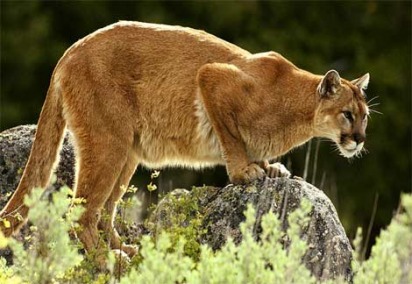Animal Universe
Welcome!
This is a cool website jam-packed with great animal pics and information about your fav animals! We'd like to thank www.animalpicturesarchive.com for providing info and inspiring us to make this great website. Also, if you would like to send us ideas or links please do so and e-mail us at [email protected].
Green Sea Turtle

Here we have pictured a Green Sea Turtle surrounded by a school of fish.
Sea turtles are large, air-breathing reptiles that inhabit tropical and subtropical seas throughout the world. Their shells consist of an upper part (carapace) and a lower section (plastron). Hard scales (or scutes) cover all but the leatherback, and the number and arrangement of these scutes can be used to determine the species.
Sea turtles come in many different sizes, shapes and colors. The olive ridley is usually less than 100 pounds, while the leatherback typically ranges from 650 to 1,300 pounds! The upper shell, or carapace, of each sea turtle species ranges in length, color, shape and arrangement of scales.
Sea turtles do not have teeth, but their jaws have modified "beaks" suited to their particular diet. They do not have visible ears but have eardrums covered by skin. They hear best at low frequencies, and their sense of smell is excellent. Their vision underwater is good, but they are nearsighted out of water. Their streamlined bodies and large flippers make them remarkably adapted to life at sea. However, sea turtles maintain close ties to land.
Females must come ashore to lay their eggs in the sand; therefore, all sea turtles begin their lives as tiny hatchlings on land. Research on marine turtles has uncovered many facts about these ancient creatures. Most of this research has been focused on nesting females and hatchlings emerging from the nest, largely because they are the easiest to find and study.
Thousands of sea turtles around the world have been tagged to help collect information about their growth rates, reproductive cycles and migration routes. After decades of studying sea turtles, much has been learned. However, many mysteries still remain.
Killer Whale

Orcas, or killer whales, are the largest of the dolphins and one of the world's most powerful predators. They feast on marine mammals such as seals, sea lions, and even whales, employing teeth that can be four inches (ten centimeters) long. They are known to grab seals right off the ice. They also eat fish, squid, and seabirds.
Though they often frequent cold, coastal waters, orcas can be found from the polar regions to the Equator.
Killer whales hunt in deadly pods, family groups of up to 40 individuals. There appear to be both resident and transient pod populations of killer whales. These different groups may prey on different animals and use different techniques to catch them. Resident pods tend to prefer fish, while transient pods target marine mammals. All pods use effective, cooperative hunting techniques that some liken to the behavior of wolf packs.
Whales make a wide variety of communicative sounds, and each pod has distinctive noises that its members will recognize even at a distance. They use echolocation to communicate and hunt, making sounds that travel underwater until they encounter objects, then bounce back, revealing their location, size, and shape.
Killer whales are protective of their young, and other adolescent females often assist the mother in caring for them. Mothers give birth every three to ten years, after a 17-month pregnancy.
Orcas are immediately recognizable by their distinctive black-and-white coloring and are the intelligent, trainable stars of many aquarium shows. Killer whales have never been extensively hunted by humans
Mountain Lion

This powerful predator roams the Americas, where it is also known as a puma, cougar, and catamount. This big cat of many names is also found in many habitats, from Florida swamps to Canadian forests.
Mountain lions like to prey on deer, though they also eat smaller animals such as coyotes, porcupines, and raccoons. They usually hunt at night or during the gloaming hours of dawn and dusk. These cats employ a blend of stealth and power, stalking their prey until an opportunity arrives to pounce, then going for the back of the neck with a fatal bite. They will hide large carcasses and feed on them for several days.
Mountain lions once roamed nearly all of the United States. They were prized by hunters and despised by farmers and ranchers who suffered livestock losses at their hands. Subsequently, by the dawn of the 20th century, mountain lions were eliminated from nearly all of their range in the Midwest and Eastern U.S.—though the endangered Florida panther survives.
Today, whitetail deer populations have rebounded over much of the mountain lion's former range and a few animals have appeared in more eastern states such as Missouri and Arkansas. Some biologists believe that these big cats could eventually recolonize much of their Midwest and Eastern range—if humans allow them to do so. In most western U.S. states and Canadian provinces, populations are considered sustainable enough to allow managed sport hunting.
Mountain lions require a lot of room—only a few cats can survive in a 30-square-mile (78-square-kilometer) range. They are solitary and shy animals, seldom seen by humans. While they do occasionally attack people—usually children or solitary adults—statistics show that, on average, there are only four attacks and one human fatality each year in all of the U.S. and Canada.
This is only a few of our Pictures and Information, You can see more in our other Pages.
